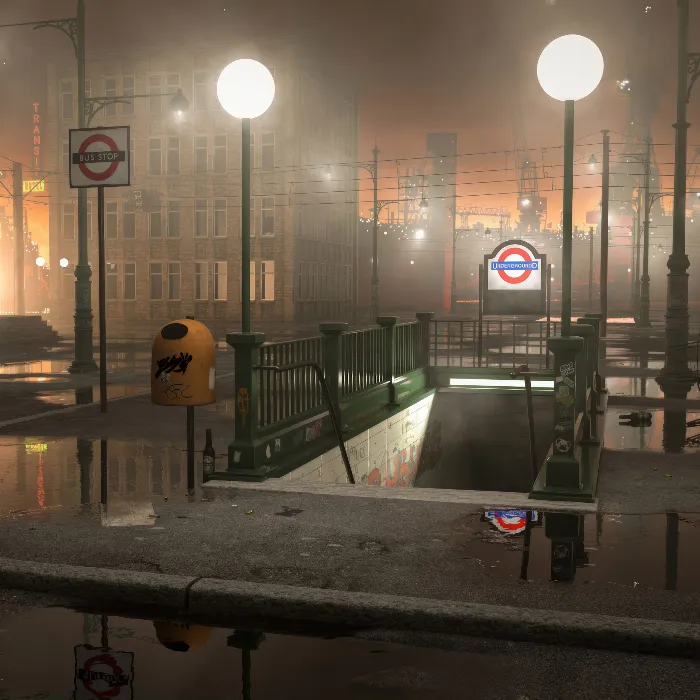Lighting is a crucial element in 3D design that creates atmosphere and depth. In this Tutorial, I will show you how to design a facade in Cinema 4D to make it look more lively. By applying luminous materials, you can simulate illuminated windows and create an impressive reflection on the asphalt. Let's get started with the first steps!
Main Insights
- Illuminate your facade with polygons for realistic window lights.
- Use luminous materials to create accentuated light sources.
- Consider reflections in water collections for added depth in your scene.
Step-by-Step Guide
First, you will prepare the basic materials and objects.
Step 1: Prepare Materials Start by creating two luminous materials. Each material will have a red and a green variant. These materials are particularly suitable for signs or windows. You can assign the red material to the hotel signage and use the green material for other elements.
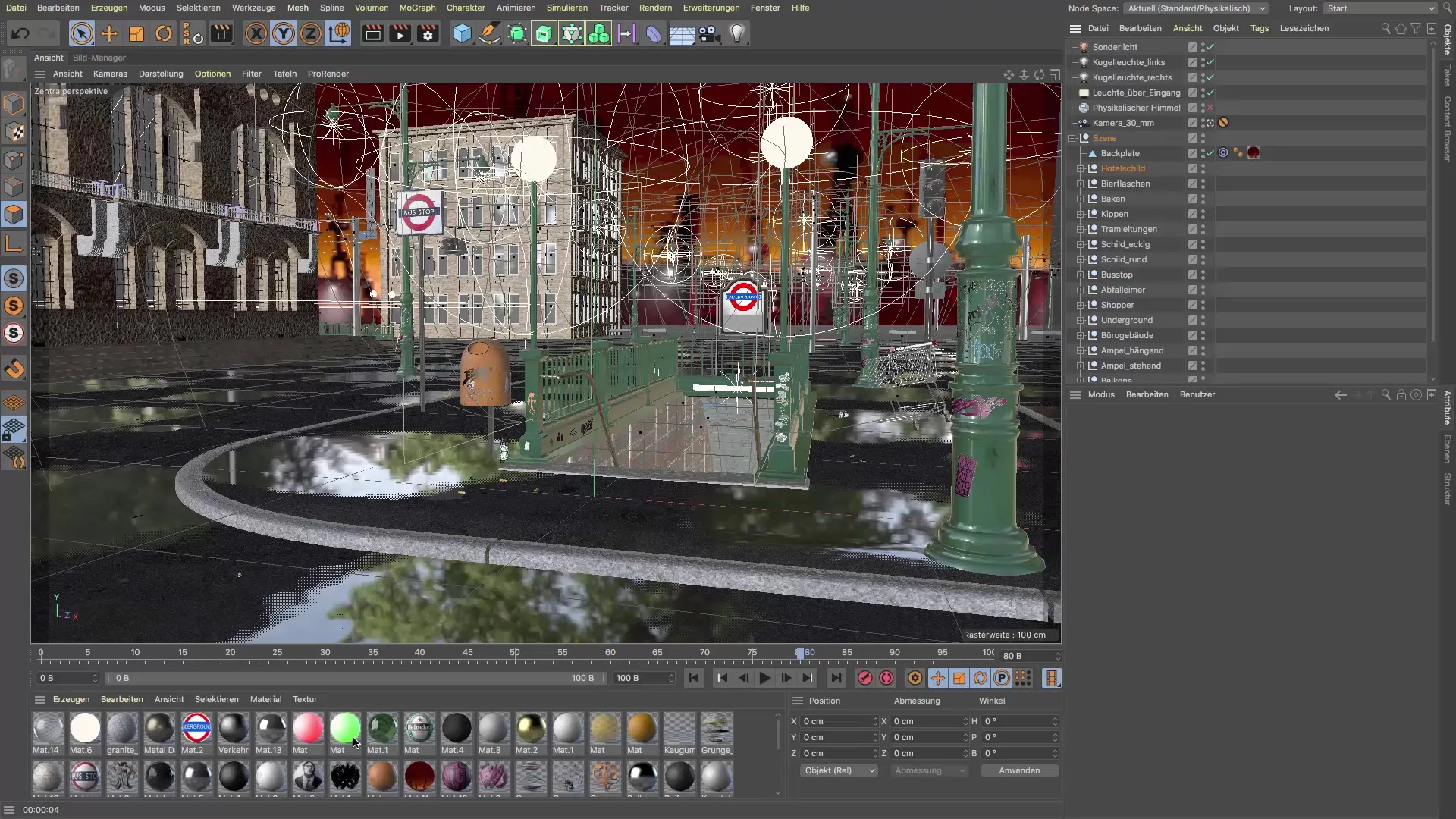
Step 2: Apply Materials to Objects Apply the prepared materials to your 3D objects. Make sure that the red material is used for both "Hotel" and "Transit." Add the green material to the desired object and ensure that a vibrant color is set in the luminance channel to achieve the desired effect.
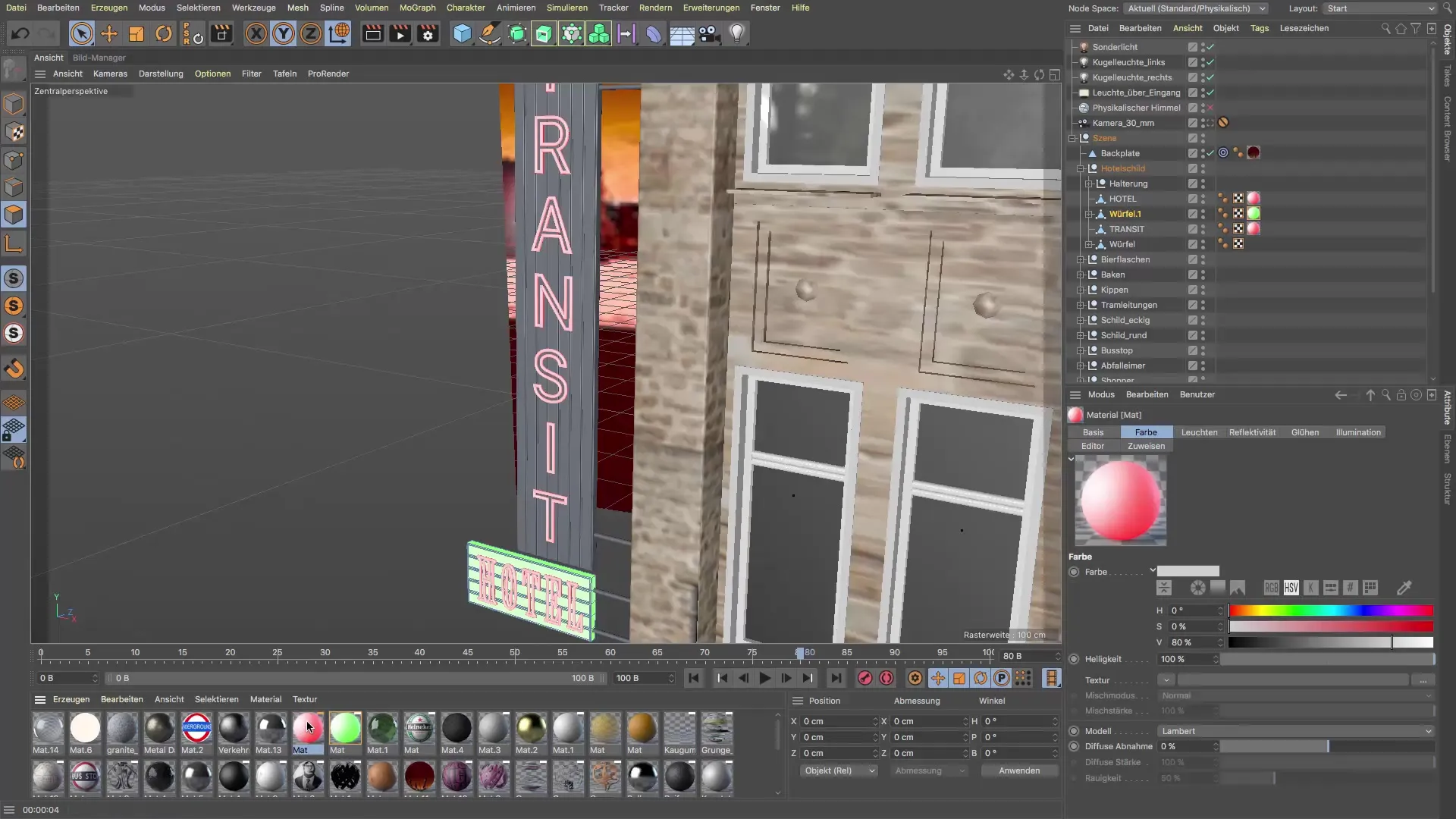
Step 3: Create Facade Now create the facade that is to be illuminated in your scene. At the moment, it has a rather lifeless appearance, so it is important to give it more expression. It is sensible to use a polygon that covers all the windows of the facade. Place this polygon behind the facade so that only the back is visible.
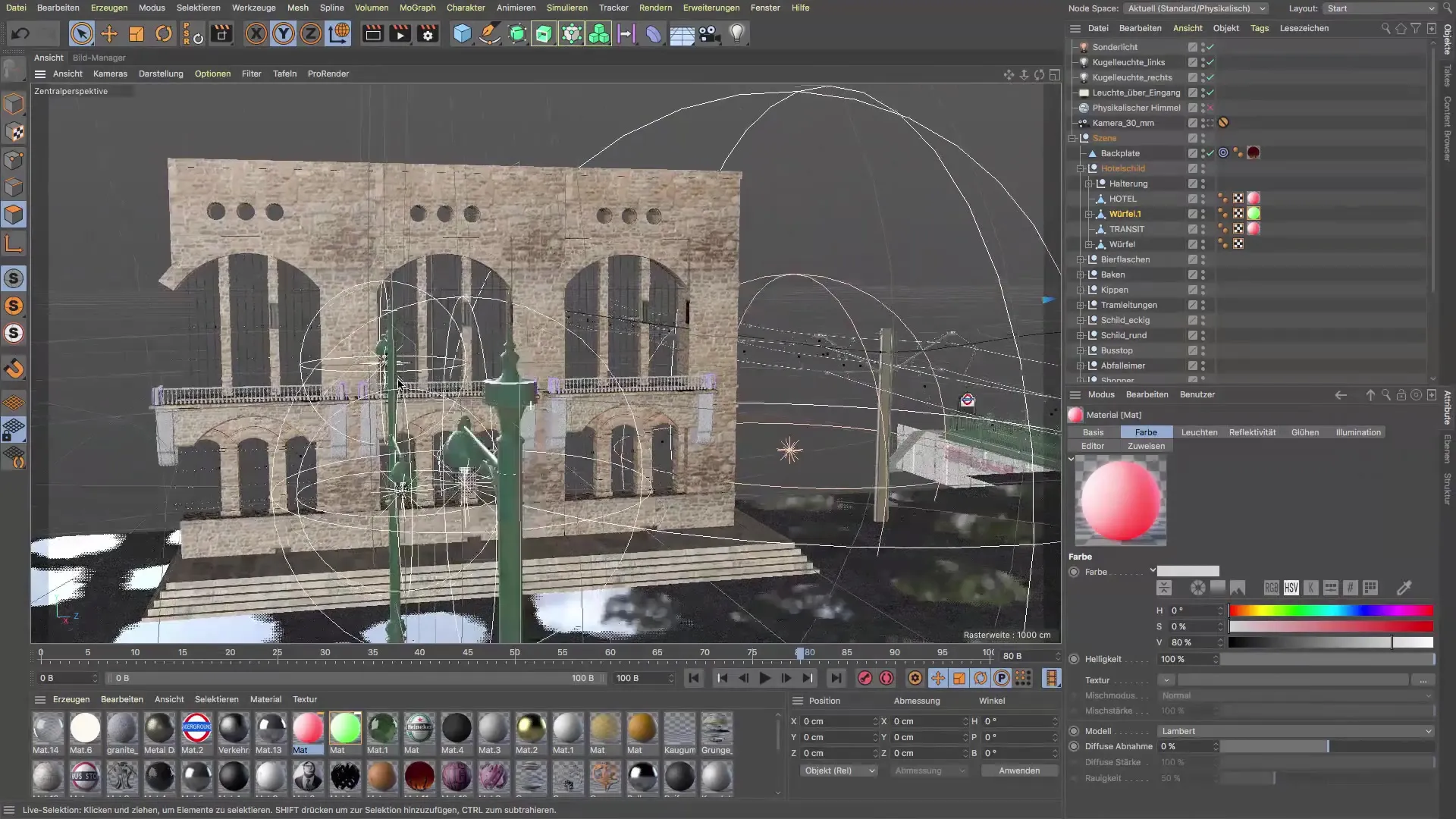
Step 4: Position Polygon With the move tool, you can drag the polygon into the right position. Make sure it effectively emits light through the windows. It should be positioned behind the facade in such a way that the lighting effect on the windows is clearly visible.
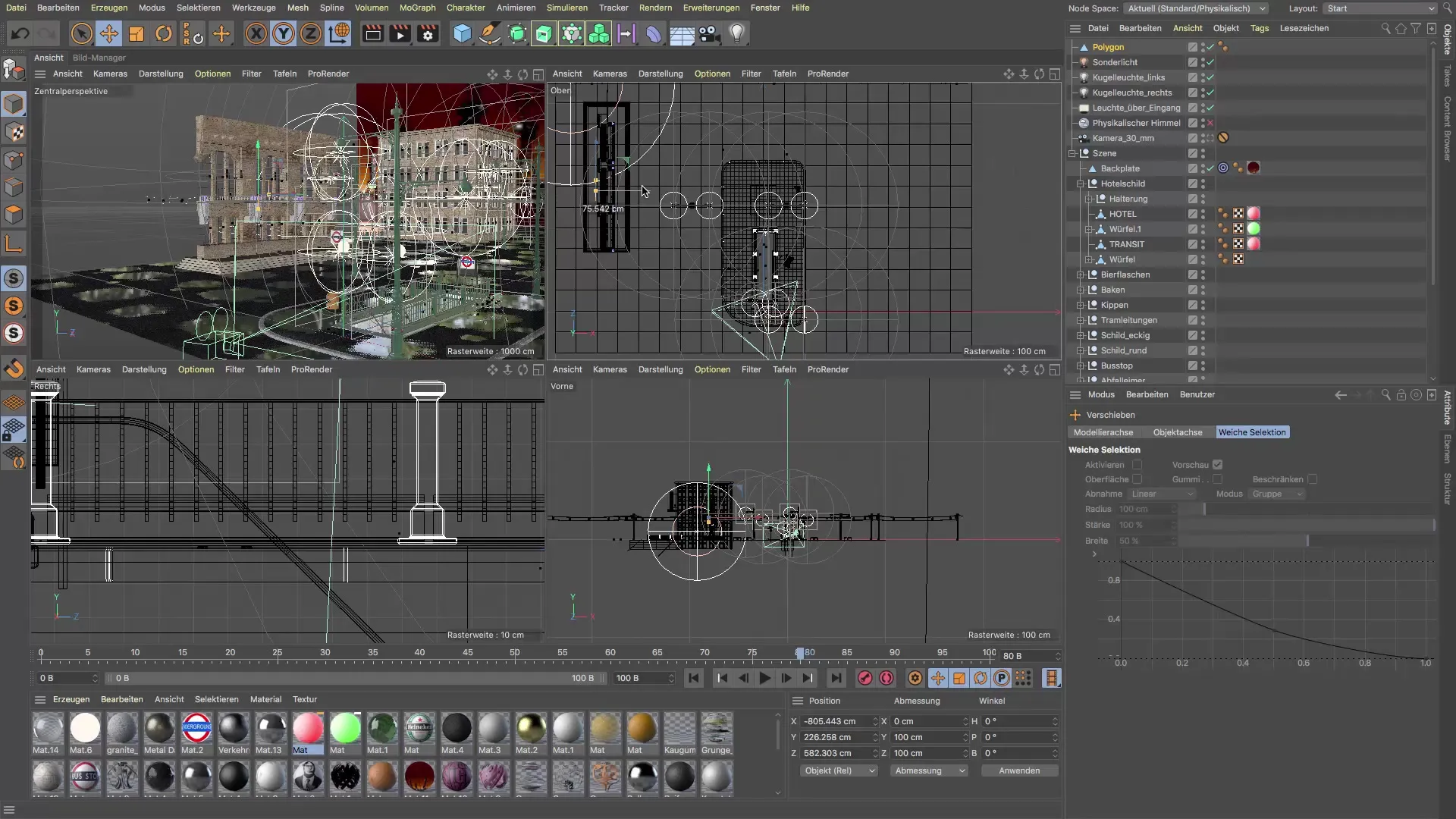
Step 5: Adjust Polygon Size Adjust the size of the polygon so that it optimally covers the windows without obscuring the facade itself. Make sure to adjust the height and width so that it harmoniously fits into the overall picture.
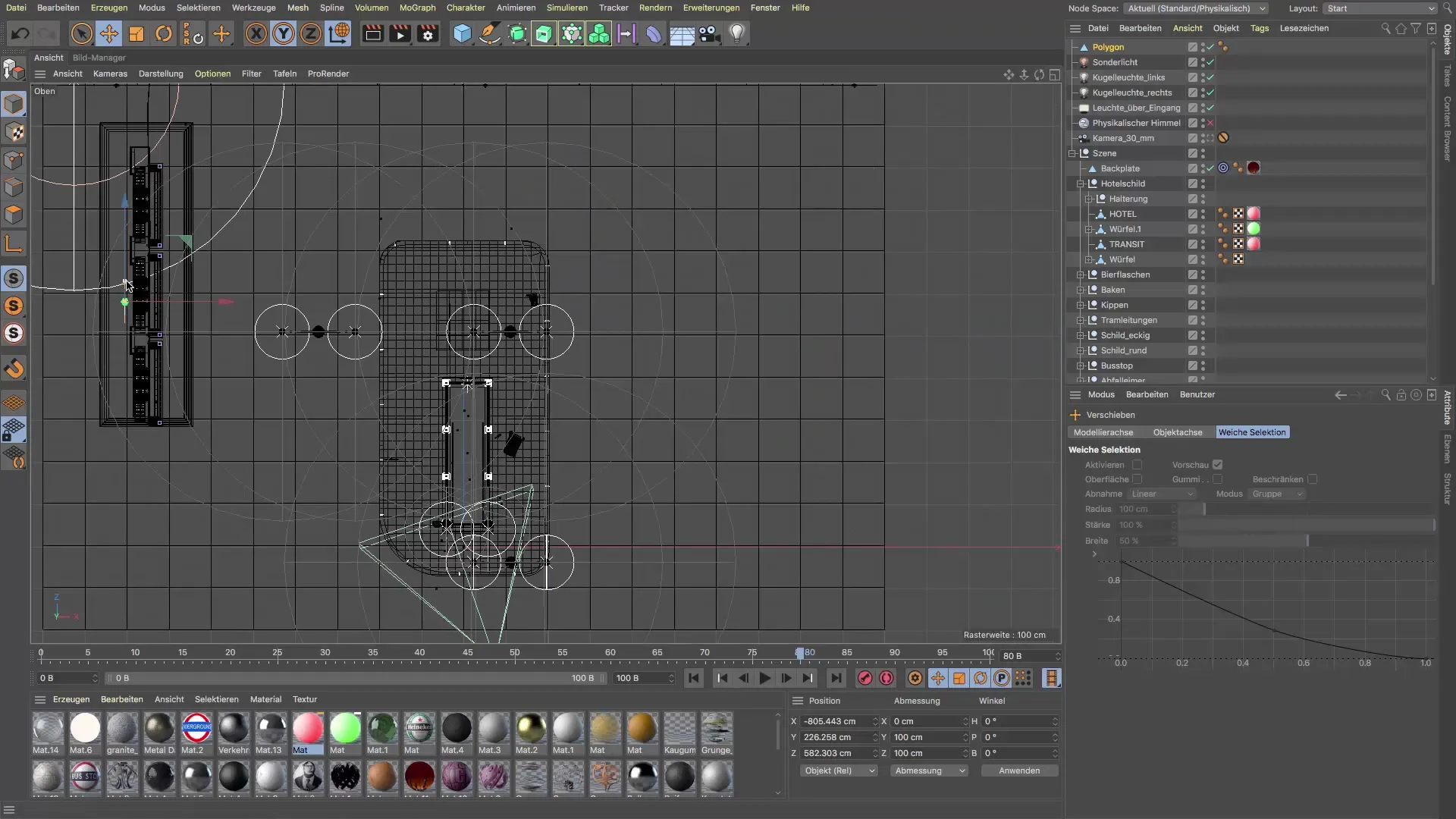
Step 6: Set Light and Glow Go back to the material settings and activate the luminance channel. Here, a strength of 150% should be set to create a strong glow. The glow can be adjusted according to the size of the objects to emit realistic light without looking too exaggerated.
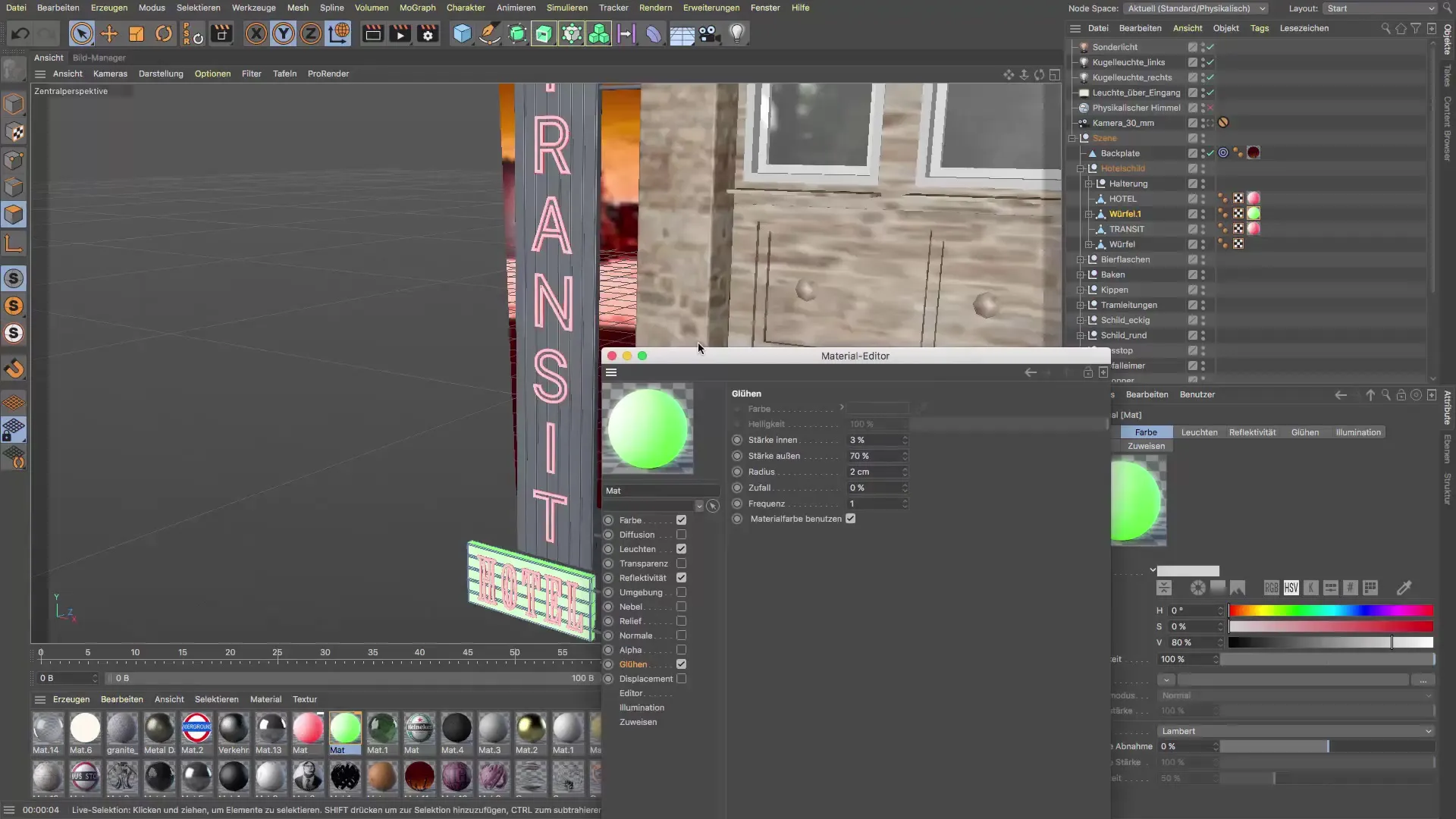
Step 7: Check Reflections To ensure that the light surface also generates reflections, now view the scene from different perspectives. With the proper arrangement of the polygon, reflections in the puddles or water collections should now be clearly visible.
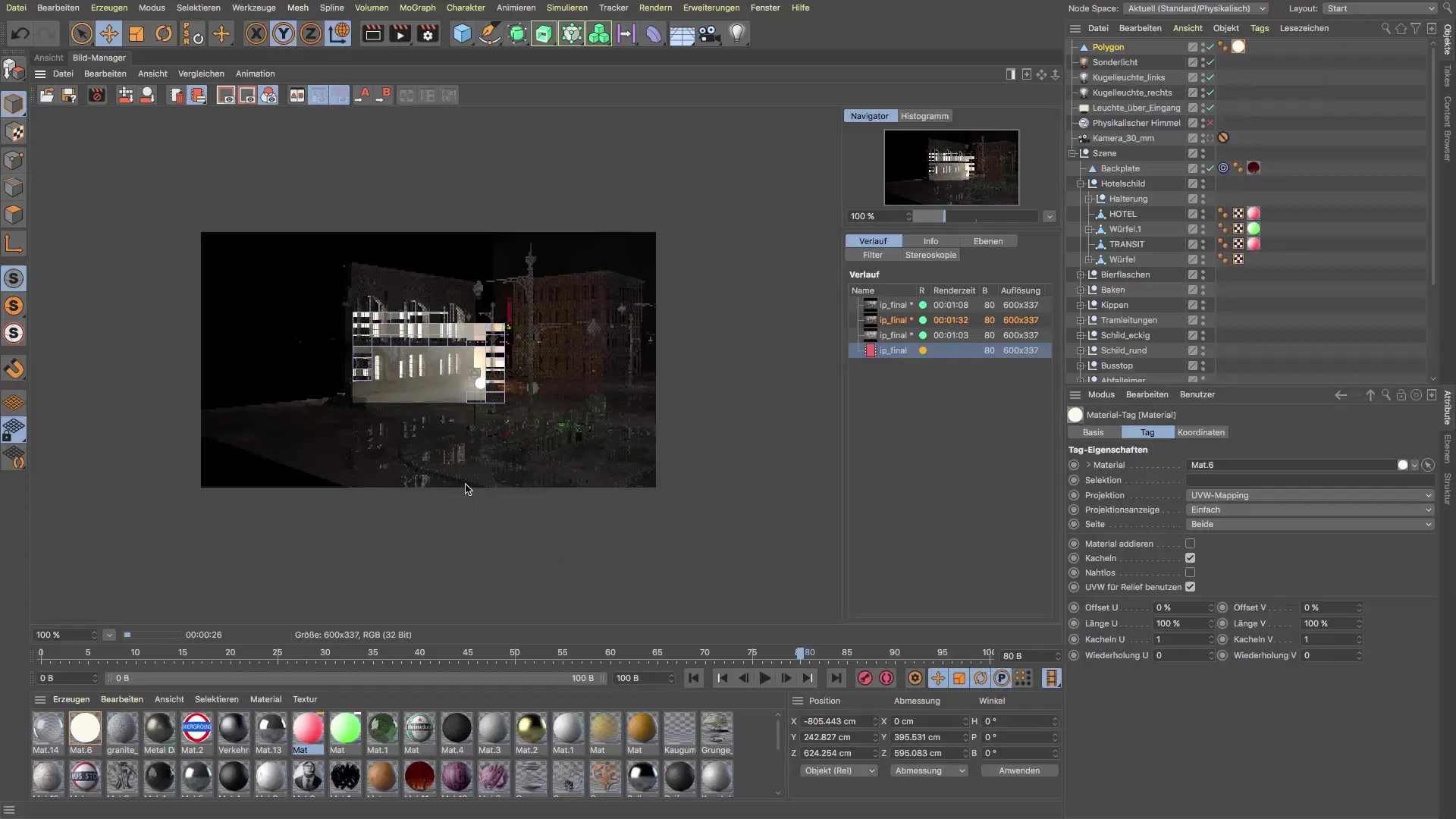
Step 8: Final Check and Rendering Check all settings once again and then perform a rendering to see the final result. Experiment with different views to ensure that the lighting looks good from all perspectives.
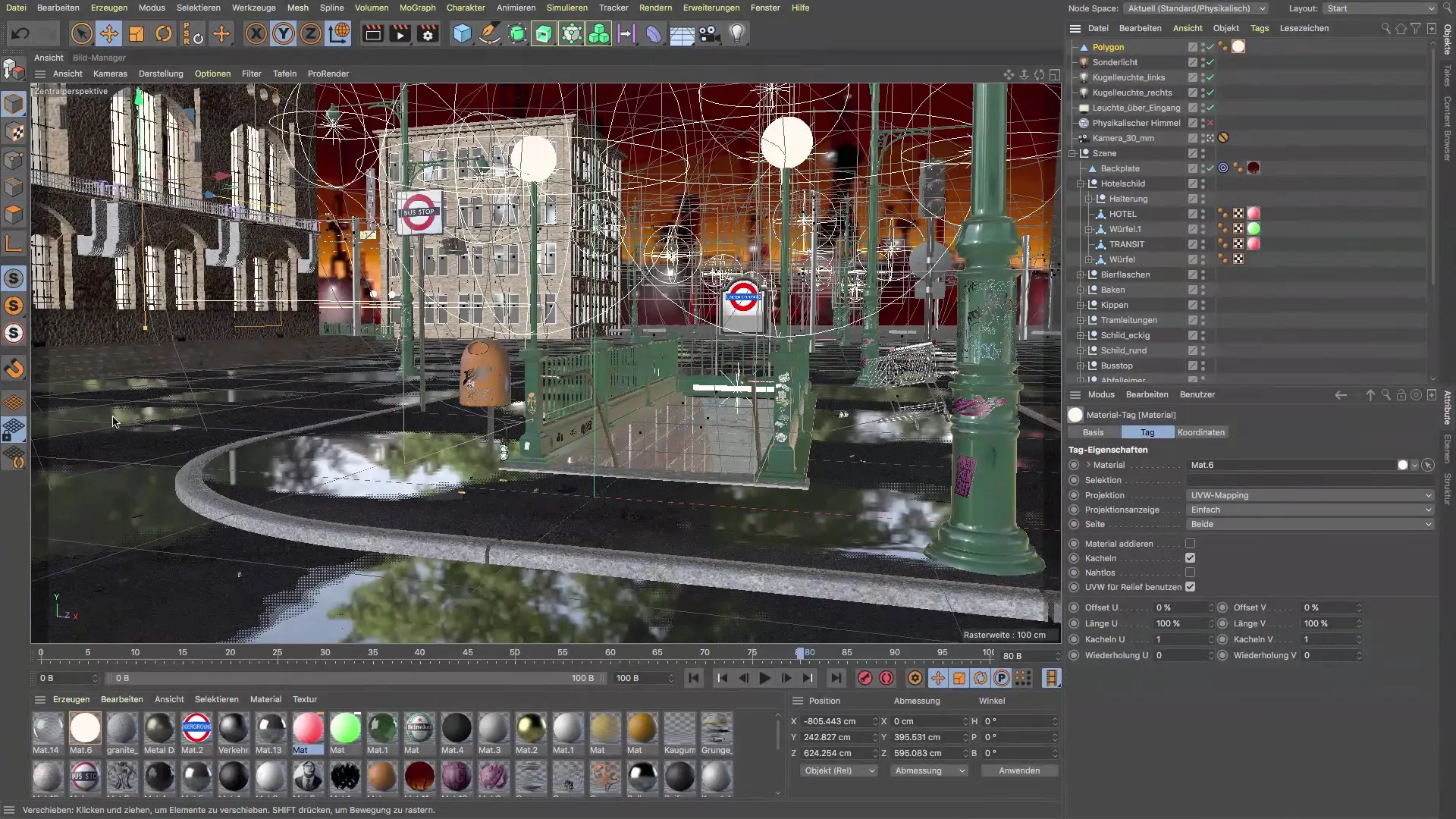
Summary - Illuminating Facades in Cinema 4D: Step-by-Step Guide
In this tutorial, I have shown you how to effectively illuminate a facade in Cinema 4D. By using luminous materials and arranging polygons behind the facade, you can simulate realistic window lights that bring additional life to your scene. The reflections in puddles give your image a new dimension.
Frequently Asked Questions
How do I create luminous material in Cinema 4D?You can create luminous material by adjusting the color in the luminance channel and adding a value of 150%.
How do I correctly position the polygon behind the facade?Use the move tool and drag the polygon behind the facade so that only the back is visible.
How do light sources affect reflections in my scene?Light sources create reflections when they hit materials that are shiny or reflective. Make sure your light sources are set accordingly.
What settings are required for the best light reflections?Adjust the material settings for glow and reflectivity to achieve the most realistic light reflection.
How can I change the camera view during rendering?You can change the camera view in the overview camera mode and then perform the rendering again to test different perspectives.
